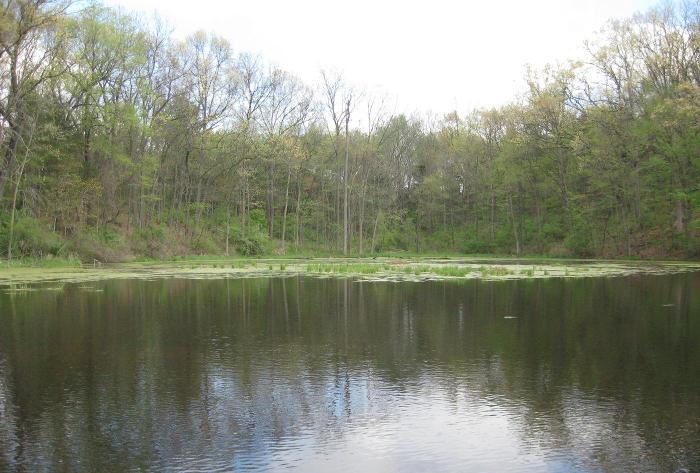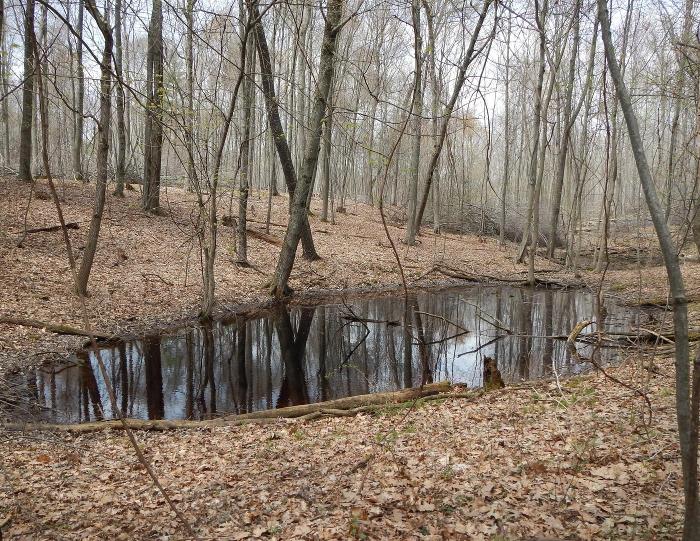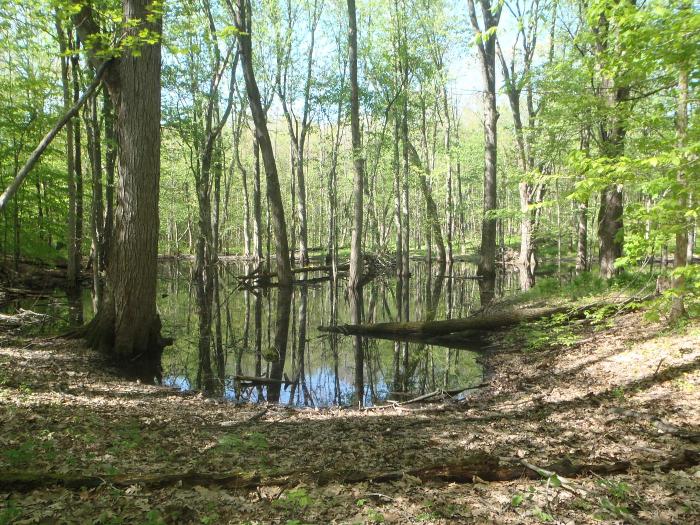Physical Characteristics
Vernal pools are highly variable and come in many shapes and sizes.
Pool Size
Vernal pools are typically small and shallow. They are generally less than 1 hectare (2.5 acres), with most less than 0.1 hectare (0.25 acre), in surface area. Most vernal pools are 1 meter (3 feet) deep or less, but some pools can be deeper. Vernal pools generally reach their maximum size and water level in the spring. There are currently no lower or upper size limits to vernal pools. They just need to be large (or small) enough to remain flooded for at least two months but also dry frequently enough (e.g., annually or every few years) to prevent permanent fish populations from establishing and provide suitable habitat for animal species that are characteristic of vernal pools.

Large Vernal Pool. Photo: David McColl
Isolation
Vernal pools often occur in upland forests and are geographically isolated from other wetlands or waterbodies. However, some vernal pools occur next to each other, forming complexes of vernal pools. Some vernal pools are part of larger wetlands, or are connected to other wetlands or waterbodies by groundwater. Some vernal pools are fed and/or drained by temporary streams. Vernal pools that occur along river floodplains can become connected to the river during flood events. But vernal pools are not continuously connected to permanent waterbodies during most of their biologically active season at least on the surface. This helps them remain fishless. Vernal pools can be biologically connected though to other pools, wetlands, and permanent waters through the dispersal of animals and plants.

Hydrology
A defining characteristic of vernal pools is that they are temporarily flooded. According to the working definition of vernal pools adopted by the Michigan Vernal Pools Partnership, vernal pools have a "fluctuating water regime with alternating periods of flooding and drying". A typical vernal pool will fill with water in the spring from rain, snow melt, and some groundwater influence. Pools dry at different rates due to factors like depth, canopy cover, etc but will usually draw down totally or significantly throughout the summer. Pools can also can fill in the fall or winter but must have water in the spring to be considered a vernal pool. They typically hold water for minimum of two months in most years. However, some vernal pools are semi-permanent, and may only dry in some years (e.g., 3 out of every 5 years).
Learn how to identify vernal pools in their dry phase, here.
Isolated Vernal Pool. Photo: MNFI

